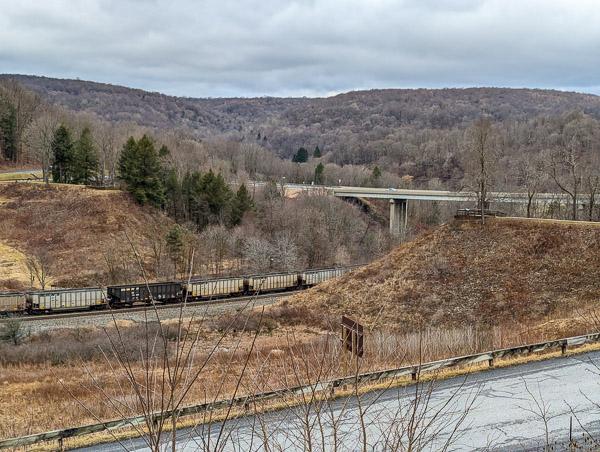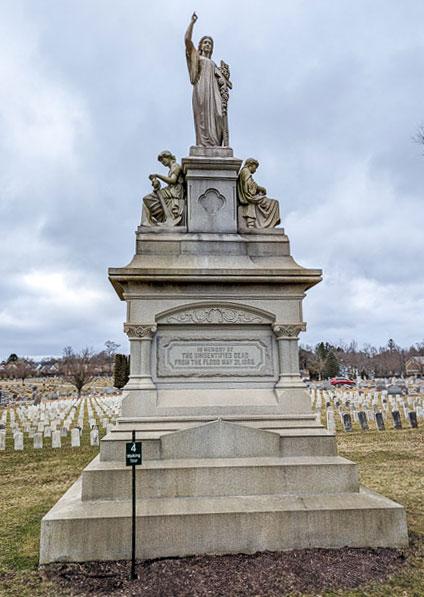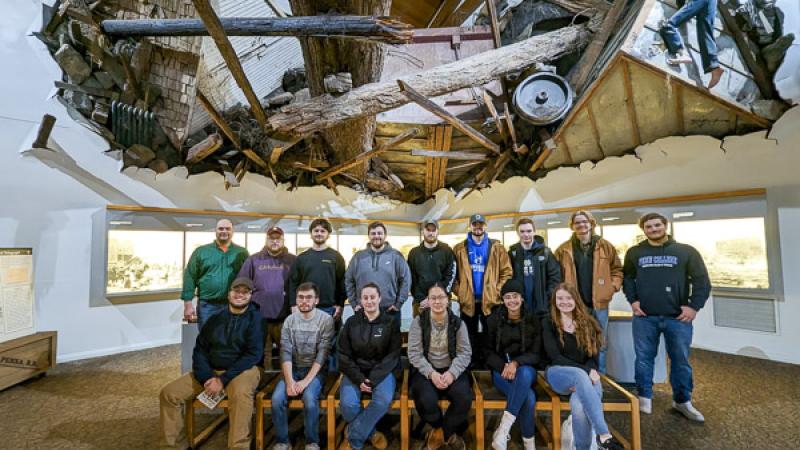Yesterday’s disaster informs tomorrow’s response
Published 03.13.2023
Photos by William A. Schlosser and a National Park Service ranger
Emergency management & homeland security students didn’t have to travel far to gain historical context on one of the worst disasters in United States history. Students enrolled in two classes – Disaster Recovery and The History & Evolution of Emergency Management – recently ventured two and a half hours southwest of Williamsport to the site of the Johnstown Flood, also known as The Great Flood of 1889. In its time, the disaster was the largest loss of civilian life in the U.S. with more than 2,200 fatalities.
The Penn College students and instructor (Schlosser, upper left), during their visit to the Johnstown Flood National Memorial
“Learning about disasters allows our students to better prepare for the hazards that they will be required to deal with in the field,” said William A. Schlosser, instructor of emergency management and homeland security, who accompanied the students on the trip. “Actually going to the site of the deadliest flood in U.S. history brings a whole new appreciation and understanding of why the disaster occurred.”
The Penn College contingent visited the Johnstown Flood National Memorial, the Johnstown Flood Museum and additional sites.
“They were able to walk out on the dam that caused the 1889 flood and see firsthand the issues that caused the deaths of over 2,200 people and the destruction of several towns,” Schlosser explained. “We also toured an original ‘Oklahoma House’ that was used for emergency housing for survivors following the flood in 1889.”
Students were able to talk with direct descendants of the disaster and stopped at the Unknown Plot area in Johnstown’s Grandview Cemetery to pay respects to the 777 victims who were never identified.
“Going to Johnstown was an amazing experience. I was able to see firsthand where the flood happened and where so many people lost their lives and were impacted because of a dam failure,” said Sierra M. Kunig, an emergency management & homeland security student from Pennsylvania Furnace. “As an emergency manager, I was able to see the flaws because of the dam and why it occurred. My favorite thing during our field trip was touring the Johnstown National Flood Memorial, then walking around the area where the flood occurred. We have read about the flood and how far the water traveled, but it’s different reading about it than actually seeing it.”


The emergency management & homeland security major is also inspiring the next generation of emergency managers, having demonstrated an “earthquake shake table” at the annual Science Fair for elementary and middle school children, and in aiding area Boy Scouts in attaining their Search and Rescue merit badges (both events were recently held on the Penn College campus).
Outreach will continue during July in Tioga County, when Schlosser expects to engage youth at a weeklong camp for those interested in becoming first responders.
“Through events like these, we want to create a safety mindset and emergency management focus in the youngest of Tomorrow Makers,” the faculty member added.
